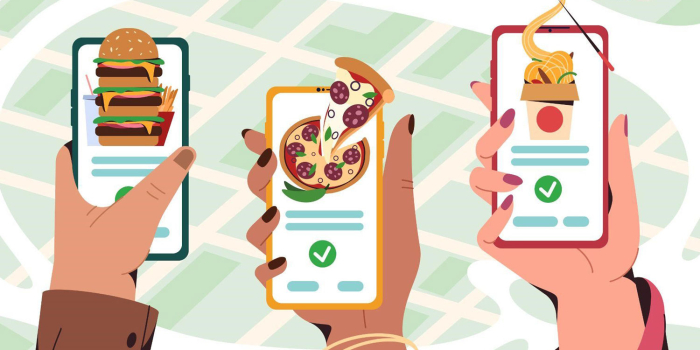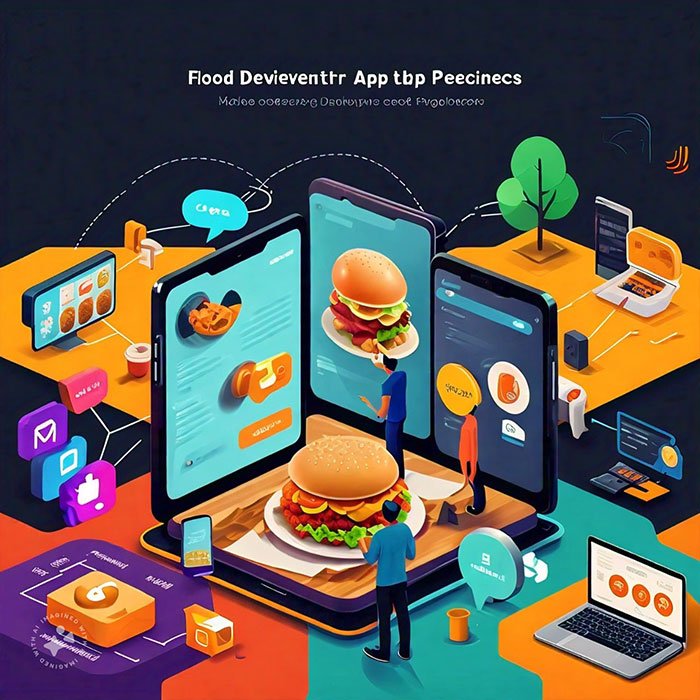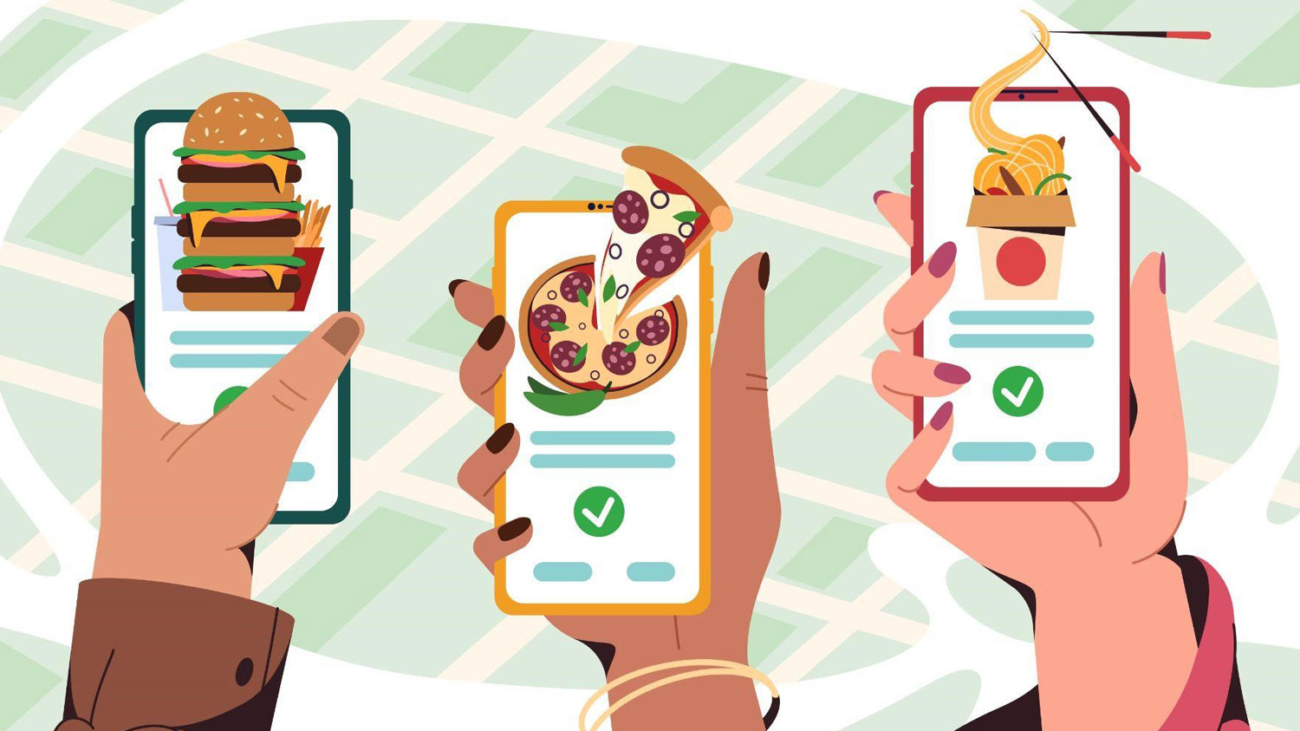With the rise of online food delivery services changing the way we eat, food delivery app development has become a booming industry. However, creating a successful feeding app requires choosing the right technology. The technology stack you choose will determine the performance, scalability, and user experience of your application.
To understand the features of Food Delivery
Food delivery typically has three main components:
- Customer Application: Used to help customers find menus, place orders, and track deliveries.
- Restaurant App:Used by restaurant operators to manage orders and update menus.
- Delivery Driver Application: Used for drivers to accept delivery requests and go to customer locations.

Each phase requires specific technologies to ensure seamless integration and efficiency.
Key considerations in choosing the right technology stack
1. Scalability:
– **Why It Matters:** As your user base grows, your app should be able to handle increased traffic and behavior without compromising performance.
– **What to watch for:** Identify technologies that support horizontal scaling. Cloud platforms like AWS, Google Cloud, and Azure provide scalable infrastructure that can grow with your app.
2. Explanation:
– **Why It’s Important:** Users expect faster load times and smoother connections. Performance issues can lead to user dissatisfaction and churn.
– **What to look for:** Choose the best performing backend technologies and the best performing frontend frameworks. Storage and delivery networks (CDNs) can increase performance.
3. Security:
–**Why It Matters:** In food delivery app development, handling sensitive user data, including payment information, necessitates strong security measures to protect user confidence.
-**What to Watch For:** Implement robust security authentication, data encryption, and regular security checks. Utilizing technologies like HTTPS, OAuth, and JWT can significantly enhance your app’s security.
4. User Experience:
– **Why It Matters:** User-friendly interfaces and user-friendly designs are critical to retaining users and encouraging day-to-day usage . . . .
– **What to look for:** Choose frontend frameworks that support responsive design and interactive elements. User offers can also help refine the user experience.
5. Speed Up
– **Why It Matters:** Time to market is critical in feeding the competition app space. A fast development cycle can give you a significant boost.
– **What to look for:** Use technologies that provide robust development tools, pre-built modules, and libraries. Agile development techniques can also accelerate the development process.
How to Choose the Right Tech Stack for Food Delivery App Development

1. Improvement:
– **React Native:** For cross-platform mobile app development. It allows code reuse on both iOS and Android, reducing development time and costs.
– **Flutter:** Another good choice for cross-platform development, known for high performance and transparent UI.
2. Later Development:
– **Node.js:** Popular for its event-driven architecture and scalability. It is best to handle multiple simultaneous transactions.
– **Ruby on Rails:** Known for its developer-friendly assembly and rapid development capabilities.
3. Database:
– **MongoDB:** A NoSQL database that allows you to process large amounts of unstructured data.
– **PostgreSQL:** A powerful, open-source relational database system with strong support for complex queries and connections.
4. Cloud Services.
– **AWS (Amazon Web Services):** Offers a wide range of services including computing power, storage and databases, all scalable.
– **Google Cloud:** Known for its machine learning capabilities and reliable services.
5. Payment Methods:
– **Stripe:** Provides a secure and flexible payment processing solution that supports multiple payment methods.
– **PayPal:** Another widely used payment gateway known as its user-friendly integration.
6. Push Reports:
– **Firebase Cloud Messaging (FCM):** Allows you to send notifications to both Android and iOS users.
– **OneSignal:** An optional service for push notifications and in-app messages.
7. Mapping and Navigation:
– **Google Maps API:** Need to provide location-based functionality such as restaurant search, order tracking, and directions.
– **Map Box:** An alternative to Google Maps, known for customizable maps and robust performance.
Conclusion
Choosing the right technology stack is a critical step in the food delivery app development process. By focusing on scalability, performance, security, user experience, and speed of development, you can ensure your app meets the needs of users and businesses. Technologies such as React Native, Node.js, MongoDB, and AWS provide a robust and scalable foundation for your app’s architecture. As you embark on your development journey, carefully evaluate your options and choose the technology that best aligns with your operational needs and business objectives.
In conclusion, at Techno Derivation, we understand the importance of selecting the right technology stack for food delivery app development. Our expertise in leveraging cutting-edge technologies ensures that your app is built to perform, scale, and succeed in a competitive market.

